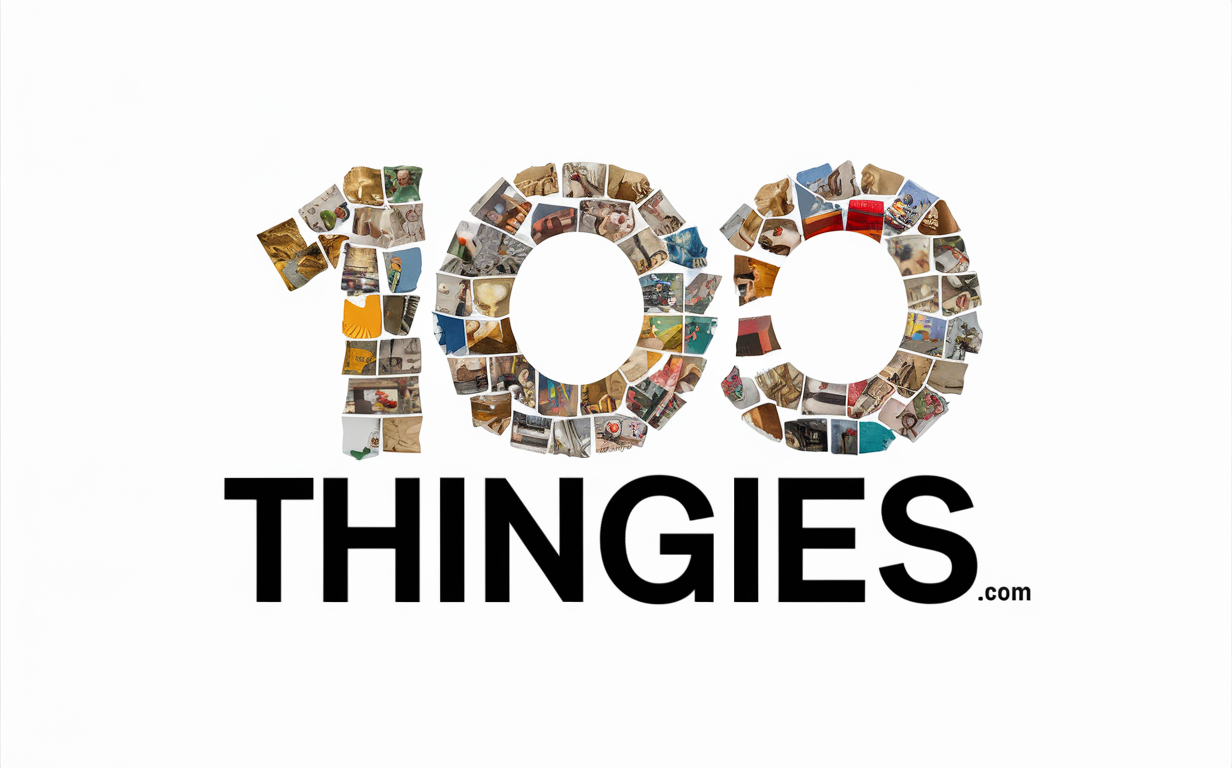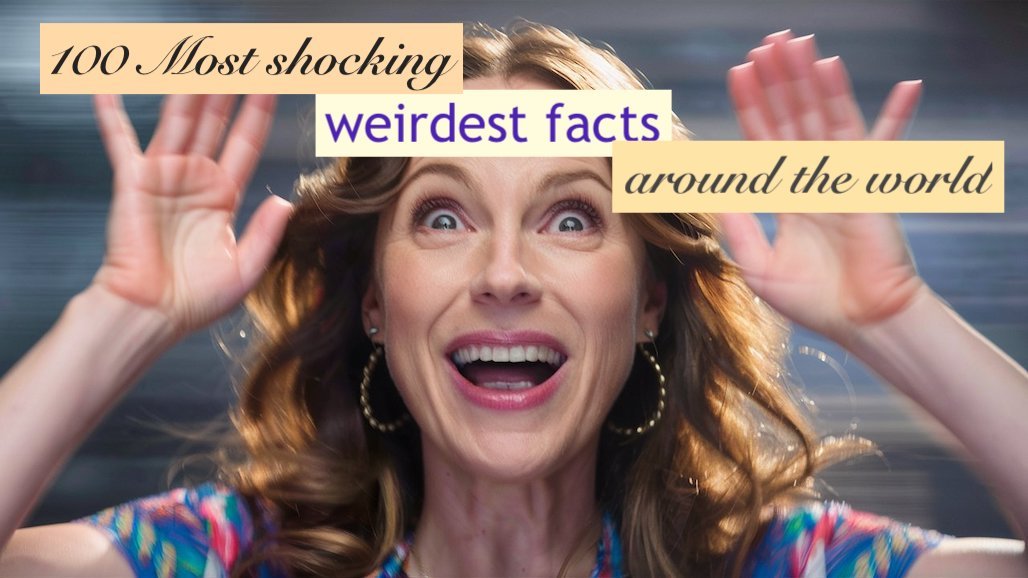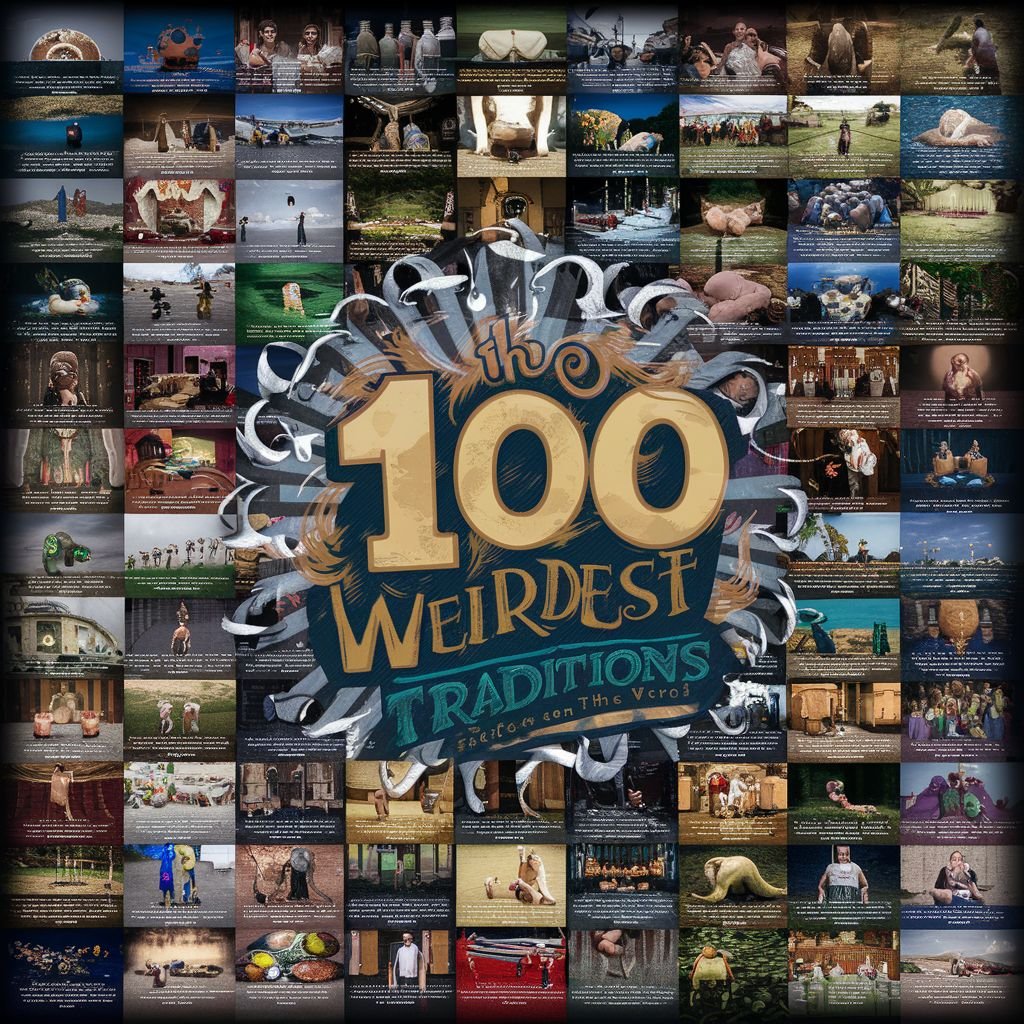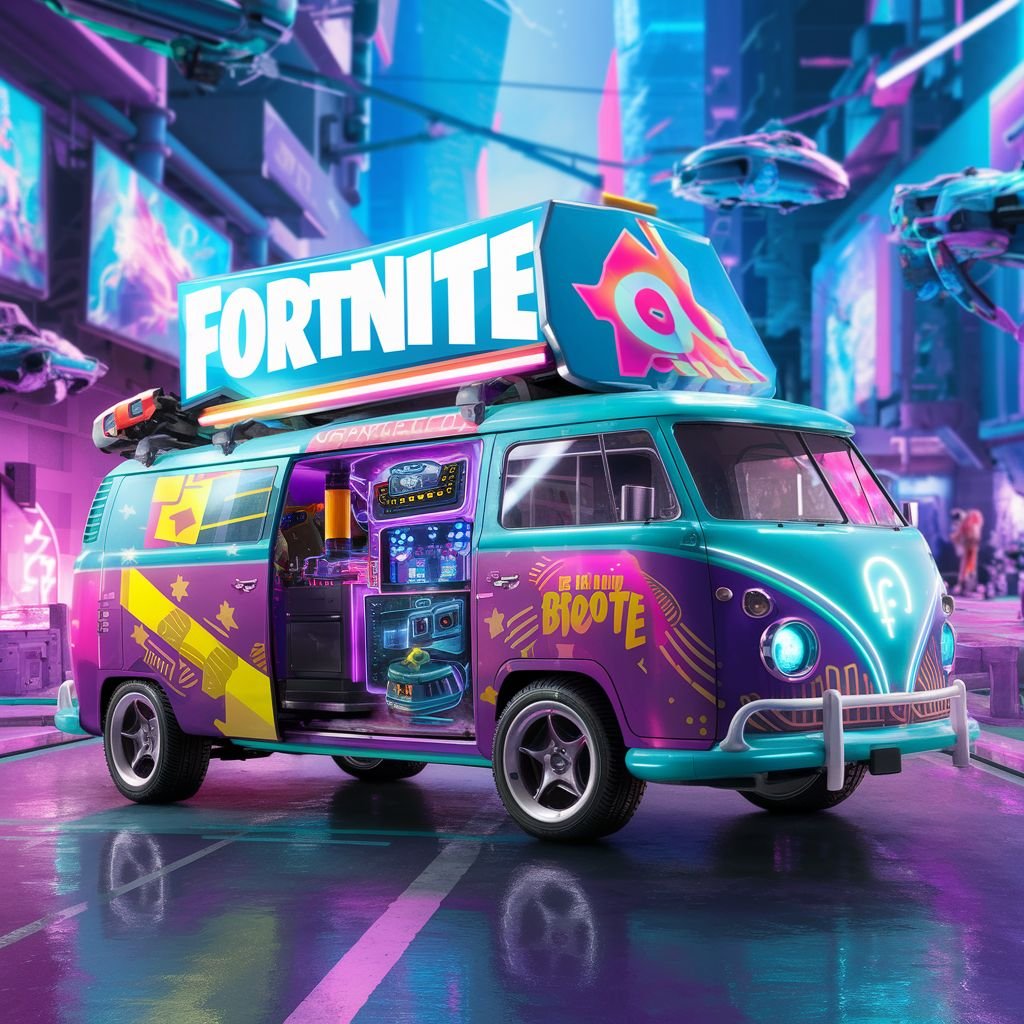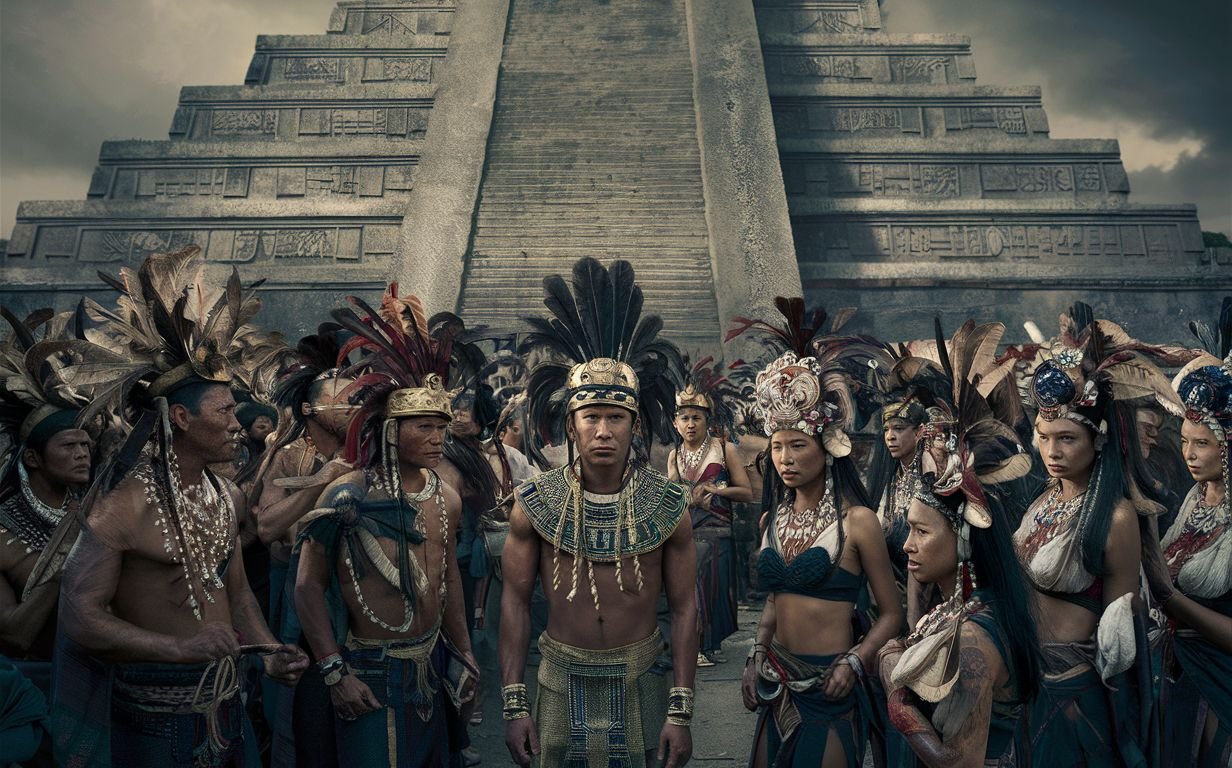Buckle up for a wild ride through the 29 fun facts about Aboriginal Art! Aboriginal art isn’t just about dot paintings and didgeridoo circles (although those are pretty cool, too!). It’s a vibrant art filled with stories, cultural knowledge, and a deep connection to the land. Looking for some more? 100thingies gotcha!
Fun Facts About Aboriginal Arts #1. Older Than Your Grandma’s Rocking Chair:

- Aboriginal art is one of the world’s oldest continuous art forms, with rock paintings dating back at least 30,000 years! That’s older than the pyramids in Egypt by a cool 20,000 years. Now that’s some serious artistic longevity.
- The paint used in these ancient artworks was often made from natural pigments like ochre, charcoal, and hematite. These natural elements created a stunning range of colors, from vibrant reds and yellows to deep blacks and whites.
2. More Than Just Cave Dwellings (Although Caves Were Pretty Sweet):
- While rock art is a significant part of Aboriginal art, it’s far from the only one! Aboriginal artists were like artistic chameleons, using various mediums like bark paintings, intricate wood carvings, and mesmerizing sand art (imagine a giant, ever-changing mandala!).
- Some bark paintings were incredibly detailed, depicting intricate stories and Dreamtime figures using cross-hatching techniques. Wood carvings served not just as art, but also as ceremonial objects and tools.
3. Dreamtime Stories: Not About Counting Sheep:
- Aboriginal art is deeply connected to Dreamtime, a complex belief system explaining the creation of the world, ancestral beings, and the interconnectedness of all things. These stories come alive in the art, with symbols and motifs acting as visual narratives. Circles represent life-giving waterholes, wavy lines depict rivers, and hand stencils symbolize a connection to the land.
- The specific details of Dreamtime stories can vary greatly between different Aboriginal groups, reflecting the unique cultural heritage and traditions of each region.
4. Symbolism: A Secret Code (Not Really, But Pretty Cool):

- Aboriginal art is a language in itself, a visual conversation with rich symbolism. It’s like cracking a secret code (except everyone knows the code, but it’s still cool!). Circles represent life-giving waterholes; wavy lines depict rivers and hand stencils symbolize a connection to the land. Understanding these symbols allows for a deeper appreciation of the stories and cultural knowledge embedded within each artwork.
5. Regional Flava: A National Art Exhibition, But Way Older:
- Australia’s vast landscape is reflected in the diverse styles of Aboriginal art. Arnhem Land is famous for intricate rock art, the Kimberley for bold paintings featuring creator beings, and the Central Desert for mesmerizing dot paintings. It’s like a national art exhibition, but way older and more interesting.
- Each regional style offers a unique window into the specific cultural practices and environmental influences of the people who created them.
Fun Facts About Aboriginal Arts #6. A Living Tradition: Not Stuck in the Past:
- Aboriginal art isn’t a dusty relic of the past; it’s a vibrant and ever-evolving tradition. Contemporary Aboriginal artists are pushing boundaries, incorporating modern materials and techniques while staying true to the essence of storytelling and cultural expression.
- These artists might use acrylic paints on canvas or create large-scale installations, all while drawing inspiration from Dreamtime stories and traditional symbols. Their work is a powerful bridge between the past and present, ensuring the legacy of Aboriginal art continues to thrive.
Fun Facts About Aboriginal Arts #7. A Global Stage: More Than Just a Local Treasure:
- Aboriginal art is no longer just an Australian phenomenon; it’s gaining international recognition and captivating audiences worldwide. Renowned galleries around the globe showcase the work of Aboriginal artists, and their pieces command high prices at auctions.
- This growing appreciation not only provides economic opportunities for Aboriginal communities but also fosters cultural exchange and understanding between Indigenous and non-Indigenous cultures.
8. More Than Just Pretty Pictures: A Powerful Tool:
- Aboriginal art is much more than just aesthetically pleasing decorations. It serves as a powerful tool for cultural transmission, ensuring knowledge and traditions are passed down from generation to generation.
- It’s a way for Aboriginal people to express their unique perspective on the world, their connection to the land, and their rich cultural heritage. By appreciating Aboriginal art, we gain a deeper understanding of their culture and the importance of preserving it.
9. A Voice for the Land: Nature’s Advocate:
- Aboriginal art is deeply connected to the natural world. The land features prominently in artworks, depicted with respect and reverence. Animals, plants, and natural features are all interwoven into the stories told through art.
- By studying Aboriginal art, we gain insights into the traditional ecological knowledge of Aboriginal people and their deep understanding of the delicate balance within the environment.
10. A Journey of Discovery: Unveiling the Layers:
- Aboriginal art is an invitation to embark on a journey of discovery. Each artwork holds layers of meaning waiting to be unraveled. By understanding the symbolism, the stories behind Dreamtime, and the regional variations, we gain a deeper appreciation for the artistry and cultural significance of Aboriginal art.
- So, the next time you encounter Aboriginal art, take a moment to explore its intricacies. Let it transport you to a world of storytelling, cultural richness, and a deep connection to the land.
11. Art for Ceremony and Ritual:
Many Aboriginal artworks weren’t intended for permanent display. Sand paintings, for instance, were meticulously crafted for specific ceremonies and then deliberately erased, signifying life’s impermanence and the universe’s cyclical nature.
12. X-ray Art: Seeing Beneath the Surface:
Some Aboriginal artworks, particularly rock paintings, depict animals and figures in an “X-ray” style, showing internal organs and bones alongside the external form. This unique perspective offers insights into Aboriginal beliefs about the interconnectedness of the physical and spiritual realms.
Fun Facts About Aboriginal Arts # 13. A Collaborative Spirit:
Aboriginal art creation wasn’t always a solitary endeavor. In some communities, artwork was created collaboratively, with stories and symbols passed down through generations, ensuring the continuity of cultural knowledge.
14. Beyond Aesthetics: A Source of Healing:
In recent years, Aboriginal art therapy programs have emerged, utilizing traditional art forms as a tool for cultural identity exploration, emotional expression, and healing for Aboriginal people.
15. A Fight for Ownership and Recognition:
The history of Aboriginal art is not without its complexities. In the past, Indigenous artists were often exploited, and their artworks were removed from their cultural context. Today, there’s a growing movement for ownership and recognition, ensuring Aboriginal artists control their work and receive proper credit for their artistic contributions.
21. Storytelling Through Tools:
The tools used to create Aboriginal art can themselves hold symbolic meaning. Stone axe marks on rock paintings might depict ancestral journeys, while specific types of brushes used in body painting could be associated with particular ceremonies.
Fun Facts About Aboriginal Arts #22. The Power of Repetition:
Don’t underestimate the significance of repetition in Aboriginal art. Repeated motifs or patterns can symbolize abundance, the interconnectedness of all things, or the rhythmic cycles of nature.
23. Site Specificity:
The location of an Aboriginal artwork is often just as important as the artwork itself. Rock paintings might be placed near significant landmarks or water sources, imbuing them with additional cultural and spiritual meaning.
Fun Facts About Aboriginal Arts #24. A Knowledge Pod:
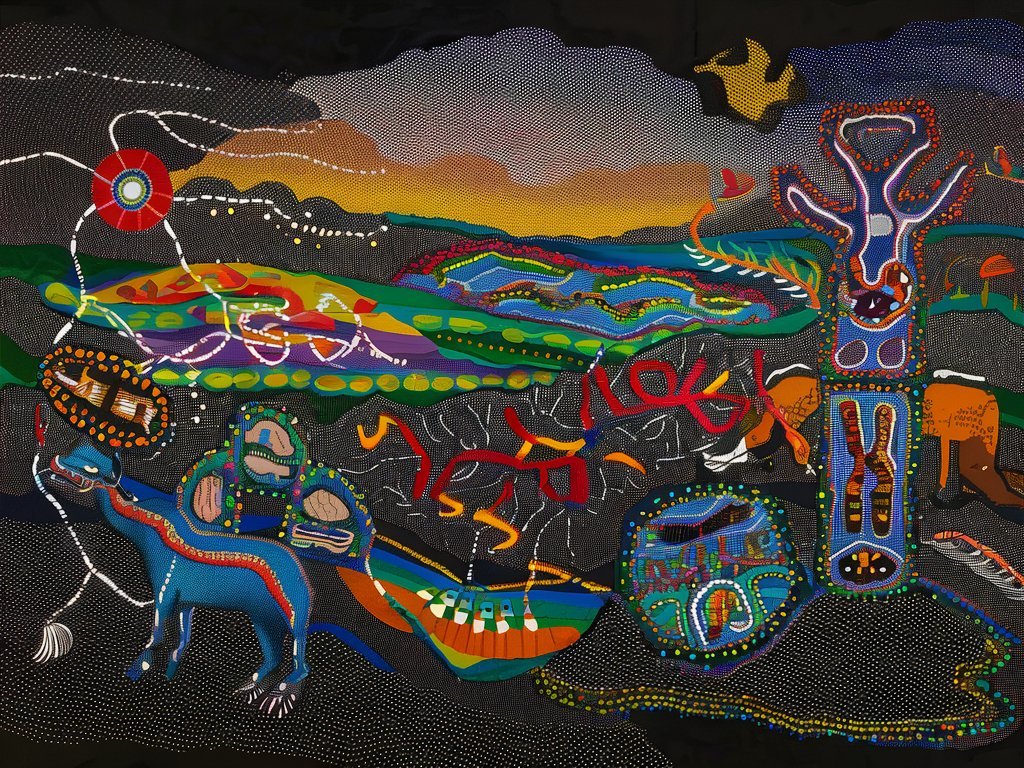
Aboriginal art isn’t just about visual storytelling; it can also encode complex knowledge systems. For instance, some artworks depict specific constellations or animal migration patterns, reflecting a deep understanding of astronomy and ecology.
25. A Modern Renaissance:
The emergence of a contemporary Aboriginal art movement in the mid-20th century wasn’t a complete break from tradition. Many artists still draw inspiration from Dreamtime stories and traditional symbols, reinterpreting them using modern materials and techniques.
26. Beyond Borders:
Aboriginal art styles and techniques have influenced artists worldwide. The use of dot painting, for example, has been adopted by non-Indigenous artists, creating a fascinating dialogue between cultures.
Fun Facts About Aboriginal Arts #27. A Catalyst for Reconciliation:
Aboriginal art is playing a growing role in reconciliation efforts between Indigenous and non-Indigenous Australians. Art exhibitions, workshops, and educational programs can foster understanding and appreciation for Aboriginal culture.
28. The Future Unfolds:
The future of Aboriginal art is bright and ever-evolving. New technologies and media are being incorporated, while the core values of storytelling, cultural expression, and connection to the land remain constant.
29. A Call to Action:
Exploring Aboriginal art isn’t just about appreciating its beauty; it’s about understanding the rich culture it represents. By learning more, we can support Indigenous artists, advocate for cultural preservation, and celebrate the ongoing legacy of Aboriginal art.
Fun Facts About Aboriginal Arts #30. A Never-Ending Journey:
The world of Aboriginal art is vast and constantly evolving. This collection of facts is just a starting point. Keep exploring, keep learning, and allow yourself to be captivated by the stories whispered through this incredible art form.
